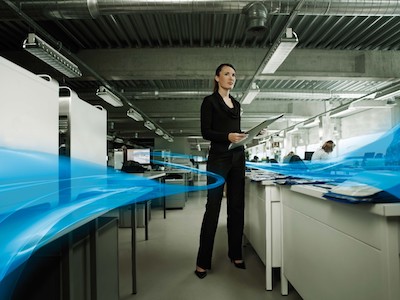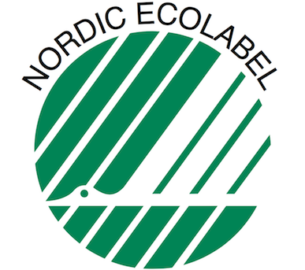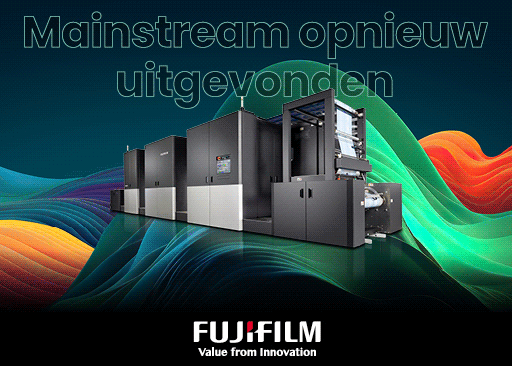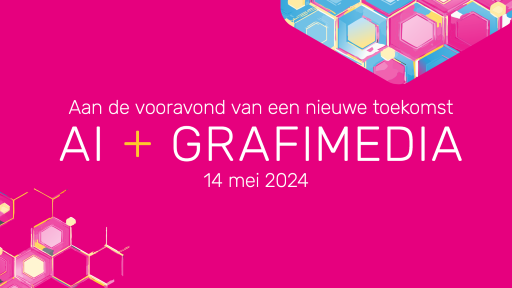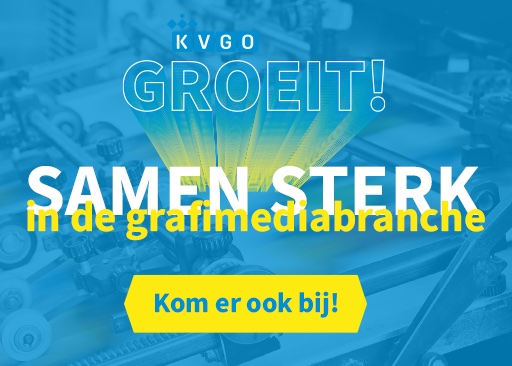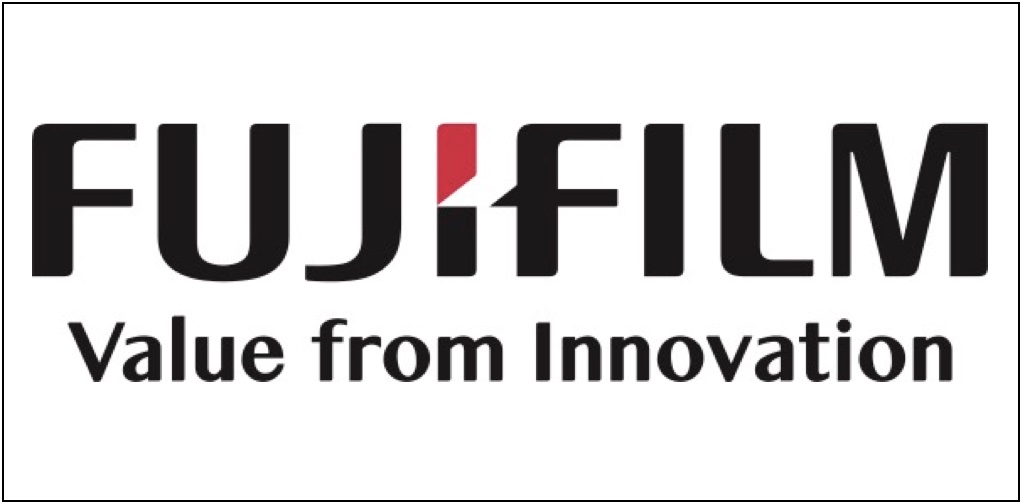Laurel Brunner
 The problem is not unique to digital presses, but how do you measure energy usage and the overall energy efficiency of a machine? With cars the most usual method is the miles per gallon, or how many litres of fuel it takes to travel 100 kilometres. Just in this example we can see how slippery the actual values are, how subjective. For instance do the calculations accurately take into account traffic, hills, darkness or temperature? The problem with energy calculations is, that there are so many variables involved. The data on which the averaged result is based is likely to be deeply buried, so using the result in a meaningful way won’t be easy or convenient.
The problem is not unique to digital presses, but how do you measure energy usage and the overall energy efficiency of a machine? With cars the most usual method is the miles per gallon, or how many litres of fuel it takes to travel 100 kilometres. Just in this example we can see how slippery the actual values are, how subjective. For instance do the calculations accurately take into account traffic, hills, darkness or temperature? The problem with energy calculations is, that there are so many variables involved. The data on which the averaged result is based is likely to be deeply buried, so using the result in a meaningful way won’t be easy or convenient.
A digital press is designed and configured for particular target applications, but it can also be used for other purposes once installed. Transactional devices get used for book printing or sign making, for example, so there is no such thing as a generic digital press. These printers use different inks and imaging technologies and they print at different speeds. Achieving an acceptable print, one that can be sold, may depend on other processes which are not connected to the digital press, as happens with packaging print or textile production. In the case of textiles the print produced on a dye sublimation machine, has to be calendared in a high energy process requiring heat and pressure. A packaging press doesn’t necessarily print packages, but merely their visual appearance and structural components. Without finishing, the packaging print is just prints. In both of these cases, it makes more sense to measure the energy usage of the system, rather than just of the press.
Things are less complicated for sign and display production using digital presses. The prints are for the most part ready to go. There may be some additional finishing, such as cutting, but mostly the print engine produces end products. The same is true for transactional print although one could argue that end products are bills in envelopes, so inserting, a finishing process of sorts, must also be included.
Whether we should be measuring the energy usage of digital presses, or of digital print media production systems, seems like a massive ask. But either way the press itself is the heart of a digital printing system, so we have to start there. We then have to ask ourselves what counts as the start of energy usage, and this is equally tricky to answer. There is a case for suggesting that measurements should not start until the printing engine is printing, rather than warming up or in stand-by mode. However at the point of starting to print there will be an atypical energy usage surge, the effect of which is minimal for most production runs. For devices that start and stop with greater frequency, the impact of the surge energy on the overall energy usage will be proportionally higher so its contribution is not negligible.
Standard energy usage calculations for digital presses assumes that there are standard digital presses and standard print applications, which there clearly aren’t. How we measure energy usage may to some extent depend on why we measure it and how results are used.
Laurel Brunner
This article was produced by the Verdigris project, an industry initiative intended to raise awareness of print’s positive environmental impact. This weekly commentary helps printing companies keep up to date with environmental standards, and how environmentally friendly business management can help improve their bottom lines. Verdigris is supported by the following companies: Agfa Graphics, EFI, Epson, Fespa, HP, Kodak, Kornit, Ricoh, Spindrift, Unity Publishing and Xeikon.
Lees verder.... Guilt is a powerful driver for improving environmental impacts and recycling in particular. The paper industry has done a great job in teaching consumers that paper should not be thrown away, because it can be recycled. They have also done a great job in teaching people that resources are precious. However there is still far more that needs to be done to encourage the use of paper based communications.
Guilt is a powerful driver for improving environmental impacts and recycling in particular. The paper industry has done a great job in teaching consumers that paper should not be thrown away, because it can be recycled. They have also done a great job in teaching people that resources are precious. However there is still far more that needs to be done to encourage the use of paper based communications.
There is, for example, considerable confusion as to the sustainability of print, which continues to be slammed because it kills trees. The message that the print industry is the only communications medium based on renewable resources, still needs reiterating. Of more serious concern is the rising use of incineration in many developed markets. Incineration masquerades under the recycling banner and reflects the energetic market in largescale incineration plant development, sales and installation.
We need to shift the messaging up a gear, and to remind businesses, local authorities and consumers that “recycle” has a very specific meaning. Recycling processes are established in most developed markets, with consumers doing the sorting or simply providing selected materials that will be burned. But they don’t necessarily understand that this is what happens to their “recycled” materials. Local authorities and municipalities sending selected waste for incineration still call it recycling, because the waste is turned to energy. This is a bit of a stretch, but it points to how environmental language tends to be appropriated to suit whatever justification is required. This is why the graphics industry in general and paper professionals in particular, need to provide much noisier reminders of what recycling actually is.
Recycling means converting waste into something reusable; it doesn’t mean converting waste into heat. Recycling returns waste to processing facilities where it can be turned into new raw materials, such as paper or textiles. It does not mean destruction. Calling incineration recycling is grossly misleading, but it does provide a guilt free way of getting rid of waste, so that consciences are clear. Consumers are basically lazy and don’t want to feel guilty, so the fiction is a convenience for them. Paper recycling means turning waste paper into new papers. Anything else is a misnomer.
This colossal misunderstanding is reducing volumes of waste paper reaching recycling supply chains. This will cause paper prices to rise and recycling rates to fall, so higher prices for printed publications and a reduced range of recycled papers. It will also be another nail in the coffin of the massive pulp and paper plants that cannot adapt to new market realities. Equally, it could create new opportunities for small operations willing to work, say with local governments to increase volumes of waste paper coming to them, discouraging incineration and breathing new life into paper recycling.
Laurel Brunner
This article was produced by the Verdigris project, an industry initiative intended to raise awareness of print’s positive environmental impact. This weekly commentary helps printing companies keep up to date with environmental standards, and how environmentally friendly business management can help improve their bottom lines. Verdigris is supported by the following companies: Agfa Graphics, EFI, Epson, Fespa, HP, Kodak, Kornit, Ricoh, Spindrift, Unity Publishing and Xeikon.
Lees verder.... Guilt is a powerful driver for improving environmental impacts and recycling in particular. The paper industry has done a great job in teaching consumers that paper should not be thrown away, because it can be recycled. They have also done a great job in teaching people that resources are precious. However, there is still far more that needs to be done to encourage the use of paper based communications.
Guilt is a powerful driver for improving environmental impacts and recycling in particular. The paper industry has done a great job in teaching consumers that paper should not be thrown away, because it can be recycled. They have also done a great job in teaching people that resources are precious. However, there is still far more that needs to be done to encourage the use of paper based communications.
There is, for example, considerable confusion as to the sustainability of print, which continues to be slammed because it kills trees. The message that the print industry is the only communications medium based on renewable resources, still needs reiterating. Of more serious concern is the rising use of incineration in many developed markets. Incineration masquerades under the recycling banner and reflects the energetic market in largescale incineration plant development, sales and installation.
We need to shift the messaging up a gear, and to remind businesses, local authorities and consumers that “recycle” has a very specific meaning. Recycling processes are established in most developed markets, with consumers doing the sorting or simply providing selected materials that will be burned. But they don’t necessarily understand that this is what happens to their “recycled” materials. Local authorities and municipalities sending selected waste for incineration still call it recycling, because the waste is turned to energy. This is a bit of a stretch, but it points to how environmental language tends to be appropriated to suit whatever justification is required. This is why the graphics industry in general and paper professionals in particular, need to provide much noisier reminders of what recycling actually is.
Recycling means converting waste into something reusable; it doesn’t mean converting waste into heat. Recycling returns waste to processing facilities where it can be turned into new raw materials, such as paper or textiles. It does not mean destruction. Calling incineration recycling is grossly misleading, but it does provide a guilt free way of getting rid of waste, so that consciences are clear. Consumers are basically lazy and don’t want to feel guilty, so the fiction is a convenience for them. Paper recycling means turning waste paper into new papers. Anything else is a misnomer.
This colossal misunderstanding is reducing volumes of waste paper reaching recycling supply chains. This will cause paper prices to rise and recycling rates to fall, so higher prices for printed publications and a reduced range of recycled papers. It will also be another nail in the coffin of the massive pulp and paper plants, that cannot adapt to new market realities. Equally, it could create new opportunities for small operations willing to work, say with local governments to increase volumes of waste paper coming to them, discouraging incineration and breathing new life into paper recycling.
Laurel Brunner
This article was produced by the Verdigris project, an industry initiative intended to raise awareness of print’s positive environmental impact. This weekly commentary helps printing companies keep up to date with environmental standards, and how environmentally friendly business management can help improve their bottom lines. Verdigris is supported by the following companies: Agfa Graphics, EFI, Epson, Fespa, HP, Kodak, Kornit, Ricoh, Spindrift, Unity Publishing and Xeikon.
Lees verder....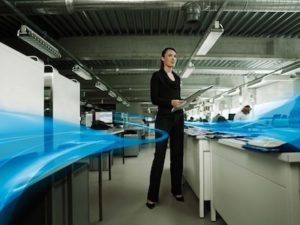 As digital printing keeps up its steady march across the graphics landscape, it’s easy to forget about progress in conventional print. In addition to improvements in makeready times and energy efficiency on press, great strides have been made with consumables, especially printing plate technologies. Most attention gets paid to processless plates such as Agfa’s Azura, Fujifilm’s ProT and Kodak Sonora. But these are not the only technologies to have helped drive down environmental impacts.
As digital printing keeps up its steady march across the graphics landscape, it’s easy to forget about progress in conventional print. In addition to improvements in makeready times and energy efficiency on press, great strides have been made with consumables, especially printing plate technologies. Most attention gets paid to processless plates such as Agfa’s Azura, Fujifilm’s ProT and Kodak Sonora. But these are not the only technologies to have helped drive down environmental impacts.
The bulk of the printing industry still uses processed plates, and here too technology advances have been considerable. Ten years ago thermal plates had to be handled under special lighting and were good for around 150,000 to 200,000 impressions. They generally had to be baked for longer runs, but baked plates would last for well over a million impressions. Imaging performance was around 200 lpi with resolution at 1-99% and platesetter imaging times were far slower than today’s rate of 70 plates per hour for 8-up plates. Today thermal plates are daylight safe and platesetters are available that can output 4,000 dpi for high quality applications. And the aluminium used for printing plates can be recycled, generating revenue for printers, saving resources and primary raw materials extraction.
The story keeps improving despite declines in conventional print volumes and the advance of processless plates and digital printing methods. Agfa for instance has introduced the Arkana smart plate processing technology which only uses small amounts of chemistry to clean the plates and has a bath life of 15,000m2. The unit can be rinsed out with tap water, so waste and maintenance overheads are reduced.
When processing the Agfa Energy Elite Eco plate, for instance, waste is reduced by 50% compared to other processors and there is no hazardous waste water to dispose of. The secret to these advances and others like them is in the coating technology. The Energy Elite Eco thermal plate has a dual coating solid enough to print long runs, yet sensitive enough for high quality imaging at 340 lpi and a 1-99% dot resolution. The plate requires no pre- or post-baking and is good for commercial and packaging runs of up to 600,000. For UV applications it’s good for 150,000 impressions. And the plate has reduced dampening requirements. Across the industry technological develops like this are all helping to cut the environmental impact of print, making both the medium and the business more sustainable.
Laurel Brunner
This article was produced by the Verdigris project, an industry initiative intended to raise awareness of print’s positive environmental impact. This weekly commentary helps printing companies keep up to date with environmental standards, and how environmentally friendly business management can help improve their bottom lines. Verdigris is supported by the following companies: Agfa Graphics, EFI, Epson, Fespa, HP, Kodak, Kornit, Ricoh, Spindrift, Unity Publishing and Xeikon.
Lees verder.... As digital printing keeps up its steady march across the graphics landscape, it’s easy to forget about progress in conventional print. In addition to improvements in makeready times and energy efficiency on press, great strides have been made with consumables, especially printing plate technologies. Most attention gets paid to processless plates such as Agfa’s Azura, Fujifilm’s ProT and Kodak Sonora. But these are not the only technologies to have helped drive down environmental impacts.
As digital printing keeps up its steady march across the graphics landscape, it’s easy to forget about progress in conventional print. In addition to improvements in makeready times and energy efficiency on press, great strides have been made with consumables, especially printing plate technologies. Most attention gets paid to processless plates such as Agfa’s Azura, Fujifilm’s ProT and Kodak Sonora. But these are not the only technologies to have helped drive down environmental impacts.
The bulk of the printing industry still uses processed plates, and here too technology advances have been considerable. Ten years ago thermal plates had to be handled under special lighting and were good for around 150,000 to 200,000 impressions. They generally had to be baked for longer runs, but baked plates would last for well over a million impressions. Imaging performance was around 200 lpi with resolution at 1-99% and platesetter imaging times were far slower than today’s rate of 70 plates per hour for 8-up plates. Today thermal plates are daylight safe and platesetters are available that can output 4,000 dpi for high quality applications. And the aluminium used for printing plates can be recycled, generating revenue for printers, saving resources and primary raw materials extraction.
The story keeps improving despite declines in conventional print volumes and the advance of processless plates and digital printing methods. Agfa for instance has introduced the Arkana smart plate processing technology which only uses small amounts of chemistry to clean the plates and has a bath life of 15,000m2. The unit can be rinsed out with tap water, so waste and maintenance overheads are reduced.
When processing the Agfa Energy Elite Eco plate, for instance, waste is reduced by 50% compared to other processors and there is no hazardous waste water to dispose of. The secret to these advances and others like them is in the coating technology. The Energy Elite Eco thermal plate has a dual coating solid enough to print long runs, yet sensitive enough for high quality imaging at 340 lpi and a 1-99% dot resolution. The plate requires no pre- or post-baking and is good for commercial and packaging runs of up to 600,000. For UV applications it’s good for 150,000 impressions. And the plate has reduced dampening requirements. Across the industry technological develops like this are all helping to cut the environmental impact of print, making both the medium and the business more sustainable.
Laurel Brunner
This article was produced by the Verdigris project, an industry initiative intended to raise awareness of print’s positive environmental impact. This weekly commentary helps printing companies keep up to date with environmental standards, and how environmentally friendly business management can help improve their bottom lines. Verdigris is supported by the following companies: Agfa Graphics, EFI, Epson, Fespa, HP, Kodak, Kornit, Ricoh, Spindrift, Unity Publishing and Xeikon.
Lees verder....
 It’s not unusual to encounter examples of environmental ignorance or to hear alarming comments from people who should know better. We experienced both in a recent meeting whilst discussing the need for environmental standards in the graphics industry. We were told in no uncertain terms that environmental science is really very simple. We were also told that there is a finite amount of carbon dioxide on the planet and that the amount of it won’t expand or diminish. Really?
It’s not unusual to encounter examples of environmental ignorance or to hear alarming comments from people who should know better. We experienced both in a recent meeting whilst discussing the need for environmental standards in the graphics industry. We were told in no uncertain terms that environmental science is really very simple. We were also told that there is a finite amount of carbon dioxide on the planet and that the amount of it won’t expand or diminish. Really?
That representatives of the paper industry have such a view is worrying, since one of the arguments for print is that it is based on renewable resources that use carbon dioxide and produce oxygen as part of their respiratory processes. But the encounter serves to demonstrate a useful reality. Even in the paper business there is still an entrenched lack of awareness of the issues shaping the sustainability of print.
The reality is that ignorance accounts for many impediments to progress and the embrace of new approaches in the graphics business. Digital communications posed a threat to print until people started to see how digital media and print can cohabit quite well. That threat is no longer perceived as being so serious. Also, paper use rises as economies develop and consumerism spreads. Both of these facts should encourage the traditional paper industry but it must surely be looking beyond the conventional wood based model. The industry needs new ideas for paper that may be even more beneficial for the planet.
One option is to use bamboo as a raw material for paper making. Bamboo is an environmentally desirable resource for paper-making. It can grow at up to one metre per day reaching maturity in three to five years, making bamboo the fastest growing plant on the planet. It grows back after harvest within a few months and thrives in poor soils and on hostile terrains where not much else will grow. Its root structures spread wide so it can help prevent soil erosion and it grows and can be processed in places that are economically depressed and vulnerable. Bamboo based papers with acceptable brightness, strength and printability qualities compared to wood pulp based papers are coming onto the market. However their environmental impact has yet to be established.
The nuances of carbon capture or the complexities of environmental science may not be universally appreciated. But professionals in the paper industry should try to keep up because the industry must keep up with its markets. There is no other option so like growing older, it has to be accepted. The alternative is even less desirable.
Laurel Brunner
This article was produced by the Verdigris project, an industry initiative intended to raise awareness of print’s positive environmental impact. This weekly commentary helps printing companies keep up to date with environmental standards, and how environmentally friendly business management can help improve their bottom lines. Verdigris is supported by the following companies: Agfa Graphics, EFI, Epson, Fespa, HP, Kodak, Kornit, Ricoh, Spindrift, Unity Publishing and Xeikon.
 It’s not unusual to encounter examples of environmental ignorance or to hear alarming comments from people who should know better. We experienced both in a recent meeting whilst discussing the need for environmental standards in the graphics industry. We were told in no uncertain terms that environmental science is really very simple. We were also told that there is a finite amount of carbon dioxide on the planet and that the amount of it won’t expand or diminish. Really?
It’s not unusual to encounter examples of environmental ignorance or to hear alarming comments from people who should know better. We experienced both in a recent meeting whilst discussing the need for environmental standards in the graphics industry. We were told in no uncertain terms that environmental science is really very simple. We were also told that there is a finite amount of carbon dioxide on the planet and that the amount of it won’t expand or diminish. Really?
That representatives of the paper industry have such a view is worrying, since one of the arguments for print is that it is based on renewable resources that use carbon dioxide and produce oxygen as part of their respiratory processes. But the encounter serves to demonstrate a useful reality. Even in the paper business there is still an entrenched lack of awareness of the issues shaping the sustainability of print.
The reality is that ignorance accounts for many impediments to progress and the embrace of new approaches in the graphics business. Digital communications posed a threat to print until people started to see how digital media and print can cohabit quite well. That threat is no longer perceived as being so serious. Also, paper use rises as economies develop and consumerism spreads. Both of these facts should encourage the traditional paper industry but it must surely be looking beyond the conventional wood based model. The industry needs new ideas for paper that may be even more beneficial for the planet.
One option is to use bamboo as a raw material for paper making. Bamboo is an environmentally desirable resource for paper-making. It can grow at up to one metre per day reaching maturity in three to five years, making bamboo the fastest growing plant on the planet. It grows back after harvest within a few months and thrives in poor soils and on hostile terrains where not much else will grow. Its root structures spread wide so it can help prevent soil erosion and it grows and can be processed in places that are economically depressed and vulnerable. Bamboo based papers with acceptable brightness, strength and printability qualities compared to wood pulp based papers are coming onto the market. However their environmental impact has yet to be established.
The nuances of carbon capture or the complexities of environmental science may not be universally appreciated. But professionals in the paper industry should try to keep up because the industry must keep up with its markets. There is no other option so like growing older, it has to be accepted. The alternative is even less desirable.
Laurel Brunner
This article was produced by the Verdigris project, an industry initiative intended to raise awareness of print’s positive environmental impact. This weekly commentary helps printing companies keep up to date with environmental standards, and how environmentally friendly business management can help improve their bottom lines. Verdigris is supported by the following companies: Agfa Graphics, EFI, Epson, Fespa, HP, Kodak, Kornit, Ricoh, Spindrift, Unity Publishing and Xeikon.
 Last time we checked there were almost five hundred different eco labels around the world. Most of them applied to food and coffee, or soil or some such. But a handful, such as the Nordic Swan, apply to any type of business, including the graphics industry. The Nordic Swan label is amongst the most internationally respected and it is also special because it has specific guidelines for printers who want to achieve certification.
Last time we checked there were almost five hundred different eco labels around the world. Most of them applied to food and coffee, or soil or some such. But a handful, such as the Nordic Swan, apply to any type of business, including the graphics industry. The Nordic Swan label is amongst the most internationally respected and it is also special because it has specific guidelines for printers who want to achieve certification.
But the current guidelines only apply until December 2017. Nordic Swan’s owners are working on a new version of the ecolabel. It is hoped that the 2018 edition will take into account a more nuanced set of criteria for printers, especially when it comes to digital printing. Currently the label is not consistent with industry realities. It is for example heavily biased in favour of an outmoded deinkability test, stating that only test methods consistent Ingede Method 11 can be used. Unfortunately Ingede Method 11 is a single loop deinking test that the industry is rapidly outpacing.
In order to gain the Nordic Swan certification, printing companies must meet various optional and mandatory requirements for which they are awarded points based on their compliance. They get points for each printing method used and the number of points available varies with the printing method. The highest number possible is 90 awarded for coldset newspaper printing. This is because newspapers are generally printed on recycled paper, which the Nordic Swan favours. The lowest number is 56 for offset printed packaging, which is curious since most packaging uses corrugated and board made from recycled papers. There are also no points awarded for printing forme production method. Despite the obvious environmental benefits there are no points for direct to plate production, the use of processless plates or printing direct to press.
It’s clear that the label does indeed need a facelift and we are hoping that some of its more egregious anomalies get sorted in the next version. For instance the Swan rewards production processes that facilitate recycling of print, but it doesn’t reward companies whose production processes minimise waste in the first place. Nor can you get extra points for process efficiencies such as colour management that optimise production or result in reduced transportation. There are no prizes for producing print close to its point of use which cuts emissions associated with transport or on demand which cuts waste production.
The Nordic Swan ecolabel prioritises the ease of turning printed papers into raw materials for recycling. It excludes process control and awards just a single point for print that complies with ISO 12647’s quality requirements. This is too low, since compliance to this standard requires tight process control and colour management, both of which cut waste through efficiency improvements. There are also no points awarded for use of ISO 16759, for calculating the carbon footprint of print. This standard can provide printing companies with benchmarks for different job types so that emissions can be better controlled. Let’s hope the Nordic Swan stewards accept industry input for an improved version in 2018, one that reflects the reality of today’s printing industry.
Laurel Brunner
This article was produced by the Verdigris project, an industry initiative intended to raise awareness of print’s positive environmental impact. This weekly commentary helps printing companies keep up to date with environmental standards, and how environmentally friendly business management can help improve their bottom lines. Verdigris is supported by the following companies: Agfa Graphics, EFI, Epson, Fespa, HP, Kodak, Kornit, Ricoh, Spindrift, Unity Publishing and Xeikon.
Lees verder.... Last time we checked there were almost five hundred different eco labels around the world. Most of them applied to food and coffee, or soil or some such. But a handful, such as the Nordic Swan, apply to any type of business, including the graphics industry. The Nordic Swan label is amongst the most internationally respected and it is also special because it has specific guidelines for printers who want to achieve certification.
Last time we checked there were almost five hundred different eco labels around the world. Most of them applied to food and coffee, or soil or some such. But a handful, such as the Nordic Swan, apply to any type of business, including the graphics industry. The Nordic Swan label is amongst the most internationally respected and it is also special because it has specific guidelines for printers who want to achieve certification.
But the current guidelines only apply until December 2017. Nordic Swan’s owners are working on a new version of the ecolabel. It is hoped that the 2018 edition will take into account a more nuanced set of criteria for printers, especially when it comes to digital printing. Currently the label is not consistent with industry realities. It is for example heavily biased in favour of an outmoded deinkability test, stating that only test methods consistent Ingede Method 11 can be used. Unfortunately Ingede Method 11 is a single loop deinking test that the industry is rapidly outpacing.
In order to gain the Nordic Swan certification, printing companies must meet various optional and mandatory requirements for which they are awarded points based on their compliance. They get points for each printing method used and the number of points available varies with the printing method. The highest number possible is 90 awarded for coldset newspaper printing. This is because newspapers are generally printed on recycled paper, which the Nordic Swan favours. The lowest number is 56 for offset printed packaging, which is curious since most packaging uses corrugated and board made from recycled papers. There are also no points awarded for printing forme production method. Despite the obvious environmental benefits there are no points for direct to plate production, the use of processless plates or printing direct to press.
It’s clear that the label does indeed need a facelift and we are hoping that some of its more egregious anomalies get sorted in the next version. For instance the Swan rewards production processes that facilitate recycling of print, but it doesn’t reward companies whose production processes minimise waste in the first place. Nor can you get extra points for process efficiencies such as colour management that optimise production or result in reduced transportation. There are no prizes for producing print close to its point of use which cuts emissions associated with transport or on demand which cuts waste production.
The Nordic Swan ecolabel prioritises the ease of turning printed papers into raw materials for recycling. It excludes process control and awards just a single point for print that complies with ISO 12647’s quality requirements. This is too low, since compliance to this standard requires tight process control and colour management, both of which cut waste through efficiency improvements. There are also no points awarded for use of ISO 16759, for calculating the carbon footprint of print. This standard can provide printing companies with benchmarks for different job types so that emissions can be better controlled. Let’s hope the Nordic Swan stewards accept industry input for an improved version in 2018, one that reflects the reality of today’s printing industry.
Laurel Brunner
This article was produced by the Verdigris project, an industry initiative intended to raise awareness of print’s positive environmental impact. This weekly commentary helps printing companies keep up to date with environmental standards, and how environmentally friendly business management can help improve their bottom lines. Verdigris is supported by the following companies: Agfa Graphics, EFI, Epson, Fespa, HP, Kodak, Kornit, Ricoh, Spindrift, Unity Publishing and Xeikon.
Lees verder.... We all know what happens to printed paper when it’s sent off for recycling. It either gets burnt or sent for processing into new materials, but when old computers reach end of life, matters are less simple.
We all know what happens to printed paper when it’s sent off for recycling. It either gets burnt or sent for processing into new materials, but when old computers reach end of life, matters are less simple.
Reducing the amount of electronic and electrical material that ends up in landfill is complicated; there are no easy answers. Setting up a recycling or reprocessing infrastructure is a start, but this too is complicated and takes funding. Taxes and fines from people who dump electrical and electronics requires legislation and policing, and is mostly done as part of a wider set of national goals that support international commitments.
This is what the Europe Union (EU) has tried to do with its Waste Electrical and Electronic Equipment Directive (WEEE). WEEE has been around since 2002 and works by setting targets for electrical goods recycling. EU member country governments can provide instructions and guidance to local communities and municipalities for implementing WEEE. The approach has changed over the years. When WEEE was first introduced it set a target for 2009. By 2009 at least four kilograms of electrical waste per year for each member of the population had to be recovered for subsequent recycling. The rate changed to be for 45% of all electrical goods coming onto the market, with the EU aiming to recycle at least 2% of all WEEE by 2016. No data is available yet to confirm if this target has been reached or not but it is likely that it has, given Europeans’ environmental zeal.
WEEE has definitely helped encourage environmental awareness amongst consumers and developers. It has encouraged entrepreneurs who see opportunities to sell on redundant electrical goods. When it comes to IT, the foundation of today’s graphics industry, plenty of companies offer to buy old computers and networking equipment.
When selling on old servers and related kit, make sure all data is wiped. Be sure the buyer is recognised by local authorities and ideally is formally accredited. Find out what happens to waste once it is collected. Shipping old electronics for dumping in developing countries doesn’t count!
Joe Adamou, business development manager for Innovent.tech a UK IT recycler told us that: “Any equipment that is suitable for refurbishment is tested, repaired and sold on to individuals, schools and businesses on low budgets.” He added that “Any equipment that is antiquated is base recycled. We break this equipment down to raw component form. This is then sold on to metal and material refiners who will prepare the materials for re-introduction into the manufacturing industry. An example of components recycled in this manner would be CPU heatsinks, motherboards, chassis casings etc.). We operate a 0% to landfill policy on all equipment. All equipment collected is brought back to our facility for processing.“ The model is helping industry, the environment and the planet. It turns a profit too.
Laurel Brunner
This article was produced by the Verdigris project, an industry initiative intended to raise awareness of print’s positive environmental impact. This weekly commentary helps printing companies keep up to date with environmental standards, and how environmentally friendly business management can help improve their bottom lines. Verdigris is supported by the following companies: Agfa Graphics, EFI, Epson, Fespa, HP, Kodak, Kornit, Ricoh, Spindrift, Unity Publishing and Xeikon.
Lees verder....
 We all know what happens to printed paper when it’s sent off for recycling. It either gets burnt or sent for processing into new materials, but when old computers reach end of life, matters are less simple.
We all know what happens to printed paper when it’s sent off for recycling. It either gets burnt or sent for processing into new materials, but when old computers reach end of life, matters are less simple.
Reducing the amount of electronic and electrical material that ends up in landfill is complicated; there are no easy answers. Setting up a recycling or reprocessing infrastructure is a start, but this too is complicated and takes funding. Taxes and fines from people who dump electrical and electronics requires legislation and policing, and is mostly done as part of a wider set of national goals that support international commitments.
This is what the Europe Union (EU) has tried to do with its Waste Electrical and Electronic Equipment Directive (WEEE). WEEE has been around since 2002 and works by setting targets for electrical goods recycling. EU member country governments can provide instructions and guidance to local communities and municipalities for implementing WEEE. The approach has changed over the years. When WEEE was first introduced it set a target for 2009. By 2009 at least four kilograms of electrical waste per year for each member of the population had to be recovered for subsequent recycling. The rate changed to be for 45% of all electrical goods coming onto the market, with the EU aiming to recycle at least 2% of all WEEE by 2016. No data is available yet to confirm if this target has been reached or not but it is likely that it has, given Europeans’ environmental zeal.
WEEE has definitely helped encourage environmental awareness amongst consumers and developers. It has encouraged entrepreneurs who see opportunities to sell on redundant electrical goods. When it comes to IT, the foundation of today’s graphics industry, plenty of companies offer to buy old computers and networking equipment.
When selling on old servers and related kit, make sure all data is wiped. Be sure the buyer is recognised by local authorities and ideally is formally accredited. Find out what happens to waste once it is collected. Shipping old electronics for dumping in developing countries doesn’t count!
Joe Adamou, business development manager for Innovent.tech a UK IT recycler told us that: “Any equipment that is suitable for refurbishment is tested, repaired and sold on to individuals, schools and businesses on low budgets.” He added that “Any equipment that is antiquated is base recycled. We break this equipment down to raw component form. This is then sold on to metal and material refiners who will prepare the materials for re-introduction into the manufacturing industry. An example of components recycled in this manner would be CPU heatsinks, motherboards, chassis casings etc.). We operate a 0% to landfill policy on all equipment. All equipment collected is brought back to our facility for processing.“ The model is helping industry, the environment and the planet. It turns a profit too.
Laurel Brunner
This article was produced by the Verdigris project, an industry initiative intended to raise awareness of print’s positive environmental impact. This weekly commentary helps printing companies keep up to date with environmental standards, and how environmentally friendly business management can help improve their bottom lines. Verdigris is supported by the following companies: Agfa Graphics, EFI, Epson, Fespa, HP, Kodak, Kornit, Ricoh, Spindrift, Unity Publishing and Xeikon.
Lees verder.... Wow. Hard to get the noggin around the fact that this is the 250th Verdigris environmental blog we’ve written. Over the last five years or so we have covered all manner of environmental matters relevant to the graphics industry. But has it made any difference to the market’s sustainability awareness? It’s no more than a vanity to say that it has, so far better to look at any scraps of evidence, but evidence of raised environmental awareness is impossible to attribute to these blogs.
Wow. Hard to get the noggin around the fact that this is the 250th Verdigris environmental blog we’ve written. Over the last five years or so we have covered all manner of environmental matters relevant to the graphics industry. But has it made any difference to the market’s sustainability awareness? It’s no more than a vanity to say that it has, so far better to look at any scraps of evidence, but evidence of raised environmental awareness is impossible to attribute to these blogs.
One very clear and obvious difference compared to where we were five years ago is the number of environmental ISO standards published or under development for graphics professionals. ISO 16759 for calculating the carbon footprint of printed matter was published in July 2013. There are now at least two carbon calculators certified to this standard. A similar document for calculating the carbon footprint of electronic media is almost ready for submission to ISO for publication. ISO 20294 (Quantification and communication for calculating the carbon footprint of e-media) can be used alongside ISO 16759 and other documents as part of a larger evaluation of the environmental impact of print.
Other documents in the works are ISO 20690 for measuring the energy usage of high speed digital printing engines with low incidences of transitional power surges and ISO 21632. This document provides directions for measuring the energy usage of digital printing engines with frequent power surges, such as those used in wide format digital printing. Both standards provide data to assist investment decisions for printers and print buyers as well as for developers of new digital printing technologies. Both are in their final stages prior to publication. A less progressed document is ISO 21331 for assessing the deinkability potential of print. Work on this has been uphill but we are making relentless progress with it.
Another document is at its journey’s start. A series of ISO standards will provide environmental declarations for different categories of print, providing a common reference for the many eco-labels available. This new ISO standard will provide a reliable and consistent data source for ecolabels. The first document in the series is for packaging and labels.
So overall has this blog made a difference to awareness of the environmental impact of print? There really is no way of knowing, but we hope that the standards work, the general awareness of sustainability in the industry and the improved environmental impact of processes and equipment are making a real difference. If the Verdigris project and these blogs have contributed, even in a very small way, then the graphics industry is heading in the right direction.
– Laurel Brunner
This article was produced by the Verdigris project, an industry initiative intended to raise awareness of print’s positive environmental impact. This weekly commentary helps printing companies keep up to date with environmental standards, and how environmentally friendly business management can help improve their bottom lines. Verdigris is supported by the following companies: Agfa Graphics, EFI, Epson, Fespa, HP, Kodak, Kornit, Ricoh, Spindrift, Unity Publishing and Xeikon.
De trainingen voor 2022 staan gereed. Kijk voor het volledige online aanbod van bestaande- en nieuwe trainingen op de website.
BLOKBOEK.COM EN PRINTMEDIANIEUWS: HET OPTIMALE DOELGROEP BEREIK


